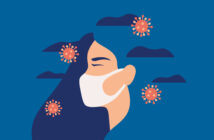BY , MSN, MS, RN, CCM, AND , BSN, RN, CCM, CPC, CEAC
INTRODUCTION
Teen suicide is a serious public health problem that can have lasting harmful effects on individuals, families, and communities. The rate of teen suicide has increased over the last decade. According to the Centers for Disease Control and Prevention (CDC), suicide is the third leading cause of death for youth 10 – 14 years of age, the second leading cause of death among people 15 – 24 after accidents and homicide. The National Institute of Mental Health believes that as many as 25 suicides are attempted for each one that is completed.
Many factors contribute to suicide. Suicide has no single determining cause but can occur in response to multiple biological, psychological, interpersonal, environmental, and societal influences. The outbreak of COVID-19 has been very stressful for teens. Feelings of isolation, worry, and change in social interactions have left many teens feeling worried, bored, or frustrated. Many teens experience high levels of stress and drama, lack of social support, and raging hormones. The present social situation related to COVID-19 is too much to handle for some.
The teen years are an unsettling time with many physical, emotional, psychological, and social changes. It is a time of pressure to fit in socially, to perform academically, and to act responsibly. It is a time of sexual identity and a need for independence that may conflict with rules and expectations set by others. A teenager is caught in the gray area between childhood and adulthood. This complex life stage can be confusing and overwhelming. The response to these stressors can be devastating and life-altering. Teen suicide has become increasingly common. The reason(s) behind a suicide attempt can be very complex. Bullying, cyberbullying, a fight with a friend, a relationship break up, moving, changing schools, parent’s divorce, remoting schooling—any major life change can be too much to tolerate. Many teens who commit or attempt suicide have given some type of warning to loved ones ahead of time.
How can case managers impact the lives of these teens? How can case managers assist family and friends as they deal with the devastating effects of a suicide attempt or actual suicide? How can case managers impact the number of teen suicide attempts and decrease the number of teen suicides? This article will address the many complex factors surrounding teen suicide, including risk factors, warning signs, treatment options, resources, and implications for case management. The goal of suicide prevention is to reduce factors that increase risk and increase factors that promote resilience.
SUICIDE IS COMPLEX
A common stimulus for suicide is intolerable psychological pain. To the suicidal individual, death may seem the only way to escape this pain. Suicidal individuals suffer from constricted thinking and may experience feelings of hopelessness and helplessness. Ambivalence is common, and thoughts of suicide should be taken very seriously.
The National Institute for Health’s (NIH) statistics on suicide rates show an increase of 35% from 1999 to 2018. In 1999, there were 30,000 suicides, and by 2018 it increased to 48,344 suicides. This is a population rate of 14.2 per 100,000. Currently, suicides occur every 12 minutes in the United States. Attempted suicides greatly outnumber actual suicides.
Suicide, per the National Institute of Mental Health, disproportionally affects adults aged 45-64, males vs. females, Caucasians, Native Americans, Alaskan natives, and rural inhabitants. There exists a stigma attached to suicide and mental health issues. An estimated 269,000 individuals annually experience a major life disruption after exposure to a suicide loss.
TEEN SUICIDE FACTS
Teen suicide is a very real problem in the United States. The American Foundation for Suicide Prevention and the National Institute of Mental Health found nearly 1 in 5 high school students said they considered suicide. Of those students, 4.6% have planned, while 8.6% tried to kill themselves. Female attempts of suicide occur 70% more often than male attempts. Males often choose more violent methods in their attempts and are usually more successful. In 2018, adolescents and young adults aged 15 to 24 had a suicide rate of 14.45% Many teens choose suicide by poisoning through the use of pills or carbon monoxide. Nearly every troubled teenager has suicidal thoughts at some point.
Studies show that 4 out of 5 teen suicide attempts have been preceded by clear warning signs. Two or three of these warning signs are usually indications of depression or even teen suicidal thoughts:
- Changes in behavior, isolating themselves, dropping out of pleasurable activities, mood swings
- Communicating feelings of hopelessness, helplessness, worthlessness, or burdensomeness
- Expressing suicidal feelings through social media, texting, phone conversation, or in-person communication
- Acquiring the means by searching online or purchasing a firearm
- Problems at home, school, or a recent relationship loss
- Changes in sleep/eating behaviors
- Neglect in hygiene and personal appearance
- Having ideation—thoughts, planning, communicating)
- Substance or alcohol abuse issues
- Feelings of purposelessness/hopelessness—no reason to live, no future, things are never going to change
- Increases in anxiety—pacing, rapid speech, hyperventilating
- Feeling trapped—no way out
- Becoming withdrawn from usual activities, social interaction
- Anger—more than typical, remains angry for longer
- Recklessness—does not care if they get hurt or die
- Mood changes—drastic, noticeable, either up or down
National Institute of Health (Youth Suicide Prevention Program)
In addition to those warning signs, there can be risk factors associated with suicide. These can include a physical illness, previous suicide attempt(s), psychological/mental disorders (depression, mood disorders, schizophrenia, social anxiety), history of abuse or mistreatment, impulsive or aggressive tendencies, family financial loss, or exposure to someone who committed suicide.
∗∗∗Previous psych admissions are the most important prediction of subsequent suicide attempts. ∗∗∗
It is important for case managers to actively listen when interacting with teens to be able to recognize and respond appropriately to a potentially suicidal individual.
LISTEN FOR STATEMENTS LIKE:
- “I wish I were dead.”
- “I can’t stop thinking about suicide.”
- “My life is over.”
- “I don’t have a reason to live.”
- “Life sucks.”
- “I hate everything.”
- “If ___ happens, I’m going to kill myself.”
- “My family would be better off without me.”
- “I won’t be bothering you anymore.”
- “I wish I could sleep forever.”
- “Nobody cares if I live or die.”
- “I wish I could die.”
National Institute of Health (Youth Suicide Prevention Program)
THE TEEN CAN BE ASKING FOR HELP BY SAYING:
- “I’m thinking of committing suicide.”
- “I want to kill myself.”
- “I want you to know something in case anything happens to me.”
- “I won’t trouble you anymore.”
National Institute of Health (Youth Suicide Prevention Program)
THESE WARNING SIGNS ARE SERIOUS CALLS FOR HELP:
- Giving away favorite things or promising them to friends or family members
- Throwing away important possessions
- Creating suicide notes
- Expressing bizarre or unsettling thoughts
- Showing signs of extreme cheerfulness following periods of depression
National Institute of Health (Youth Suicide Prevention Program)
CASE MANAGEMENT INTERVENTIONS
Teens may share their thoughts and feelings in a desperate attempt to be acknowledged. In many cases, they do not know how to deal with their feelings and problems, and they are looking for someone to help them. Case managers can help prevent suicide by decreasing suicide risk factors and increasing protective factors. Reach out to the teen! DON’T WAIT! Meet with them in person if possible and find a quiet place to talk. Share with them why you are concerned and assure them that you want to help. Listen without judgment and use open-ended questions to encourage talking and avoid saying “I understand” or “Why are you doing this?” Do not act shocked by the teen’s statements or actions. Engage with them and let them know that you care about them. If they are agitated, it may help if you walk around with them or ask the teen to take some deep breaths. Address their feelings by saying “It’s OK to cry.” or “It sounds like you are feeling frustrated/angry/hopeless.” In this way, the case manager acknowledges their pain.
The case manager should ask them directly about suicide and tell them why you are worried they might be suicidal. Honestly express your concern for their well-being. The case manager should ask the teen directly: “You said you wish you could just go to sleep and never wake up. That concerns me, are you thinking about suicide?”
You will NOT cause suicide by asking if someone is suicidal. Instead, you are creating a safe space for the individual to communicate their thoughts and feelings.
If the teen answers by saying they are not thinking of suicide, the case manager can respond by saying, “I’m glad to hear that. It does sound like you are pretty upset though. Would you tell me more about what’s going on?” or “Let’s work together to figure out how we can get you some help.”
If the teen positively answers they are thinking of suicide, the case manager can respond by saying “I’m sorry to hear that. I do not want you to do anything to hurt yourself. I don’t want to lose you.” The case manager can also say, “When you say you’re thinking about suicide, have you been thinking of a plan, or has it been more general thoughts?”
If the teen has a plan, ask them about the plan and assess the situation. Does the teen have the means to carry out their plan? Are the means available right now (gun, knife, pills, etc.)? If it is safe, remove access to the means. Determine if the teen has done anything to hurt themselves such as taking pills or cutting themselves. The case manager should reassure them by saying, “I don’t want you to die, I want to get you some help.”
If the teen is in immediate danger—call 911. The case manager should continue to reassure them that getting help is the right thing to do. Stay with the teen and do not leave them alone. Call the National Suicide Prevention Lifeline at 1-800-273-8255 for anyone over 25 years of age, or text TALK 741741 for clients 11 to 25 years of age.
If the teen is not in immediate danger but does request help, request admission to the psych unit and call the local Mental Health Crisis Center. If they have a counselor or therapist, encourage them to make a call, and get an appointment as soon as possible.
You can also refer them to a counselor or support group by calling the National Suicide Prevention Lifeline at 1-800-273-8255. The National Suicide Prevention Lifeline provides a more in-depth assessment of suicide risk and protective factors by identifying problems underlying suicidal behavior and assesses the caller’s current resources and coping skills. They also assist with problem-solving and referrals. The National Suicide Prevention Lifeline will make a contract with the teen along with a plan of action.
TEENS AND ALCOHOL
Alcohol is one of the risk factors associated with teen suicide. Many teens feel more “normal” when drinking alcohol. When the buzz wears off, the teen may become more depressed than they were before. They may feel helpless, as though they will never escape their alcohol abuse—along with increased depression. This can lead to suicidal thoughts/attempts. Treatment options are available. A physical exam with a primary care physician may be the first step. This can follow with a social service evaluation (or an equivalent in your city, county, or state) of the teenager, family, and home situation. This evaluation can provide an individualized teen treatment plan, offer therapy to the individual and family, determine if hospitalization/residential treatment for drug addiction rehab is needed, and help the family provide support and love to the teen. Yoga is now being offered in some middle and high schools to combat issues/stress the teens may be facing as well as help them to have a second thought before a suicide decision.
PREVENTING TEEN SUICIDE
Suicide protective factors can reduce the potential for suicidal behavior. Getting psychological and clinical care for a teens’ physical, mental, and substance abuse disorders is key to the success of stopping suicidal thoughts. Additionally, restricting or limiting access to methods/means of suicide, and getting family, medical, healthcare personnel, and community support is very important. All these can assist the teen in developing problem-solving and conflict-resolution skills. Do not forget to address any religious and/or cultural belief systems that discourage suicide.
COMMON METHODS OF SUCCESSFUL TEEN SUICIDE INCLUDE:
- Firearms
- Asphyxiation
- Drowning
- Cutting arteries
- Overdosing on medication or illegal drugs
- Carbon monoxide poisoning
Take any suicidal threat seriously and consider it an emergency. Never keep it a secret.
Case managers can assist family and friends dealing with the devastating effects of a suicide attempt or actual suicide by keeping the lines of communication open and helping the families express their concern, support, and love to their teen. Do not minimize or discount what the teen is going through. Try to resolve family problems constructively.
LOSS OF A CHILD TO SUICIDE
This pain and grief can be overwhelming, and the healing process starts by maintaining contact with others. Seek out supportive individuals to talk with. The whole family will be grieving, so expect that birthdays and holidays will be difficult. It is normal to feel guilty and to question how this could happen. This makes counseling and support groups important avenues to offer.
Teen suicide is a very real danger, and heeding the warning signs can truly save a life.
SUMMARY
Teen suicide/suicide attempts are a serious, growing public health problem. Rates of suicide have been on the rise for more than a decade, and the costs stretch well into the billions of dollars each year. Several barriers have impeded the progress, including stigma related to assistance-seeking for mental illness, being a survivor, and fear related to talking with someone about suicidal thoughts. Someone who has survived a suicide attempt may have serious injuries that can have a long-term effect. They may also experience depression and other associated mental health problems. The human impact of teen suicide has a far-reaching ripple effect, and we hope that increasing awareness of this tragedy can save lives.
RESOURCES
- Local board of mental health and addiction services
- Mental Health Recovery Services (local counties)
- Federal Engage 2.0 grants, which cover some cost of Grant Us Hope organization
- YellowRibbon.org
- National Institute of Mental Health www.nimh.nih.gov/health/topics/suicide-prevention/index.shtml
- American Academy of Pediatrics
- Youth Suicide Prevention Program
- Substance Abuse and Mental Health Services Administration
- 1-800-SUICIDE The Hotline for Suicide crisis
- www.teenhelp.com
REFERENCES
- The Ohio State University Medical Center
- The American Academy of Child and Adolescent Psychiatry (www.aacap.org)
- American Academy of Pediatrics
- www.suicidepreventionservices.org
- www.suicidology.org/resources/facts-statistics
- www.grantushope.org
- www.Hopesquad.com
- www.cdc.gov/violenceprevention/suicide/index/html
TEEN SUICIDE PREVENTION PROGRAMS
- Sources of Strength is a group created and disseminated by student peers to improve school norms and beliefs about suicide.
- The Youth Aware of Mental Health Program (YAM) is a program developed for teenagers aged 14 – 16. This program uses interactive dialogue and role-playing to teach teens about the risks and factors associated with suicide including knowledge about depression and anxiety. It also teaches problem-solving skills for dealing with adverse life events, stress, school, and other problems.
- Incredible Years (IY) is a comprehensive group training program for parents, teachers, and teens designed to reduce behavior and substance abuse problems by improving protective factors such as responsive and positive parent-teacher-teen interactions and relationships, emotional self-regulation, and social competence.
- The Hope Squad, a part of Grant Us Hope, is an evidence-based suicide prevention program that teaches students, staff, and community members to recognize the signs of suicide and equips them with tools to connect at-risk students with appropriate mental health resources. It is a peer-to-peer suicide prevention program—the goal is to change the school culture in recognizing the signs of suicide.






